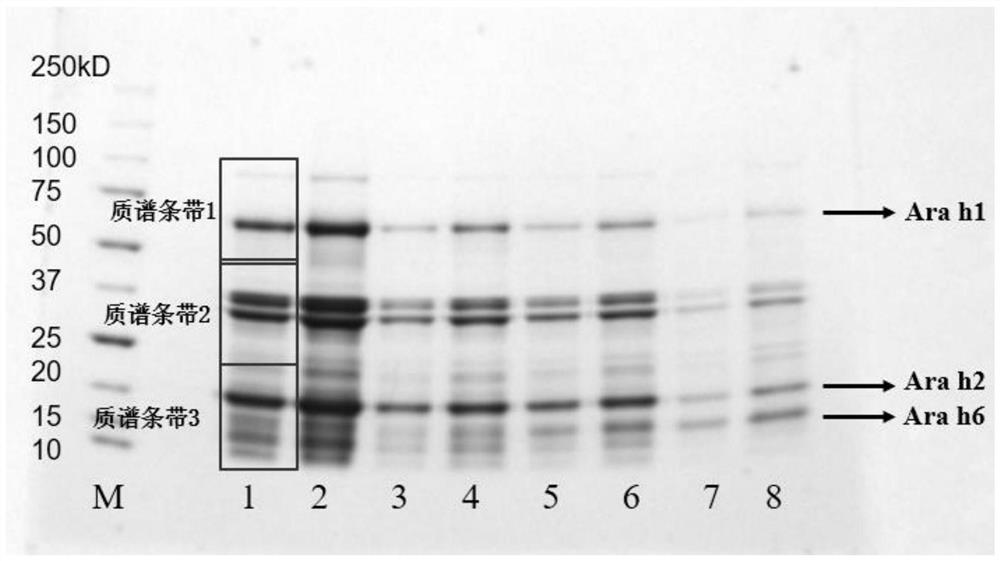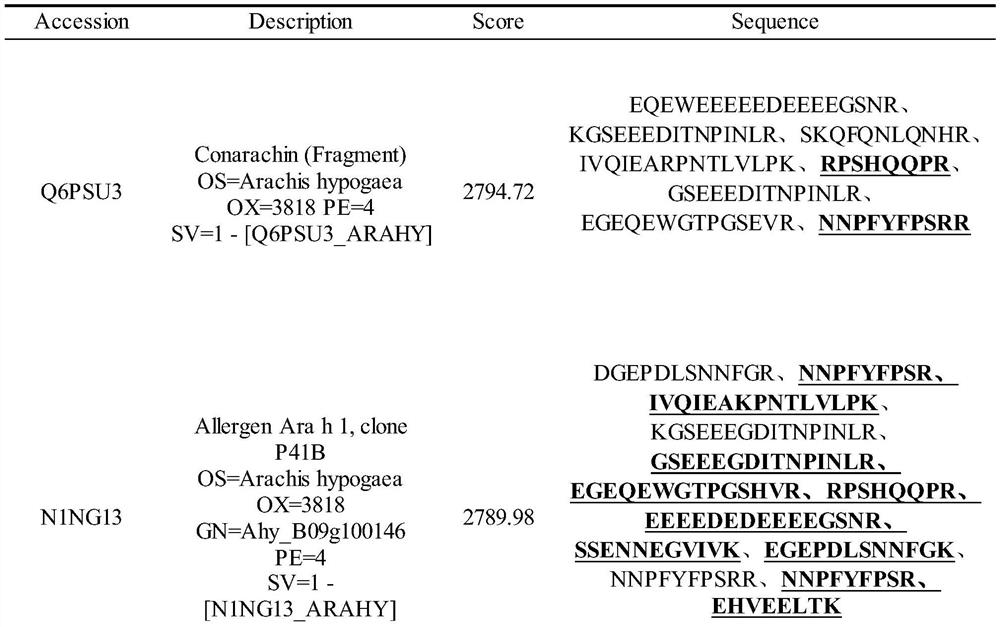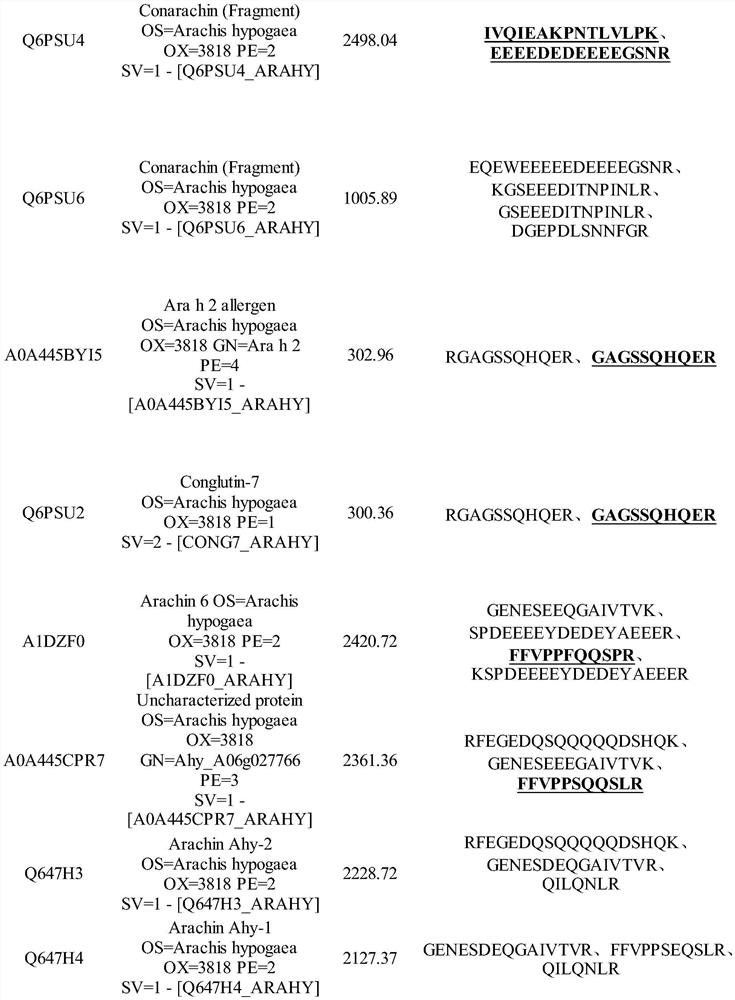Method for detecting allergen in high oleic acid peanuts by mass spectrometry
A high oleic acid and allergen technology, applied in measuring devices, instruments, scientific instruments, etc., can solve the problems of uneven gel staining, black background spots, affecting the accuracy of the test, etc.
- Summary
- Abstract
- Description
- Claims
- Application Information
AI Technical Summary
Problems solved by technology
Method used
Image
Examples
Embodiment 1
[0025] 1. Extraction of high oleic acid peanut allergen protein
[0026] 1.1 Experimental method
[0027] a. Degreased peanuts
[0028] Peel the peanuts and remove the red coat, and crush them into peanut mud with a grinder. Mix peanut mud and acetone at a mass volume ratio of 1:10, degrease with magnetic stirring at 4°C for 4 hours, and then perform suction filtration to obtain a precipitate. The resulting precipitate was repeatedly defatted once, and then centrifuged to obtain defatted peanut powder.
[0029] b. Allergenic protein extraction
[0030] Mix defatted peanut powder with Tris-HCl buffer solution containing 1M NaCl, pH 8.0 0.05M according to the mass volume ratio 1mg:10mL, high-speed shear at 9000r / min for 1min, magnetically stir at 4°C for 4h, and homogenize the peanut protein Centrifuge at 5000r / min for 30min at 4°C and collect the supernatant. Re-extract the protein crudely from the precipitate once, and collect the supernatant of the second extraction.
...
PUM
| Property | Measurement | Unit |
|---|---|---|
| Molecular weight | aaaaa | aaaaa |
Abstract
Description
Claims
Application Information
 Login to View More
Login to View More - R&D
- Intellectual Property
- Life Sciences
- Materials
- Tech Scout
- Unparalleled Data Quality
- Higher Quality Content
- 60% Fewer Hallucinations
Browse by: Latest US Patents, China's latest patents, Technical Efficacy Thesaurus, Application Domain, Technology Topic, Popular Technical Reports.
© 2025 PatSnap. All rights reserved.Legal|Privacy policy|Modern Slavery Act Transparency Statement|Sitemap|About US| Contact US: help@patsnap.com



